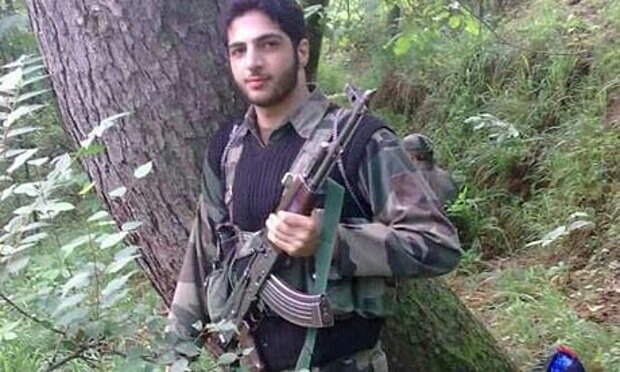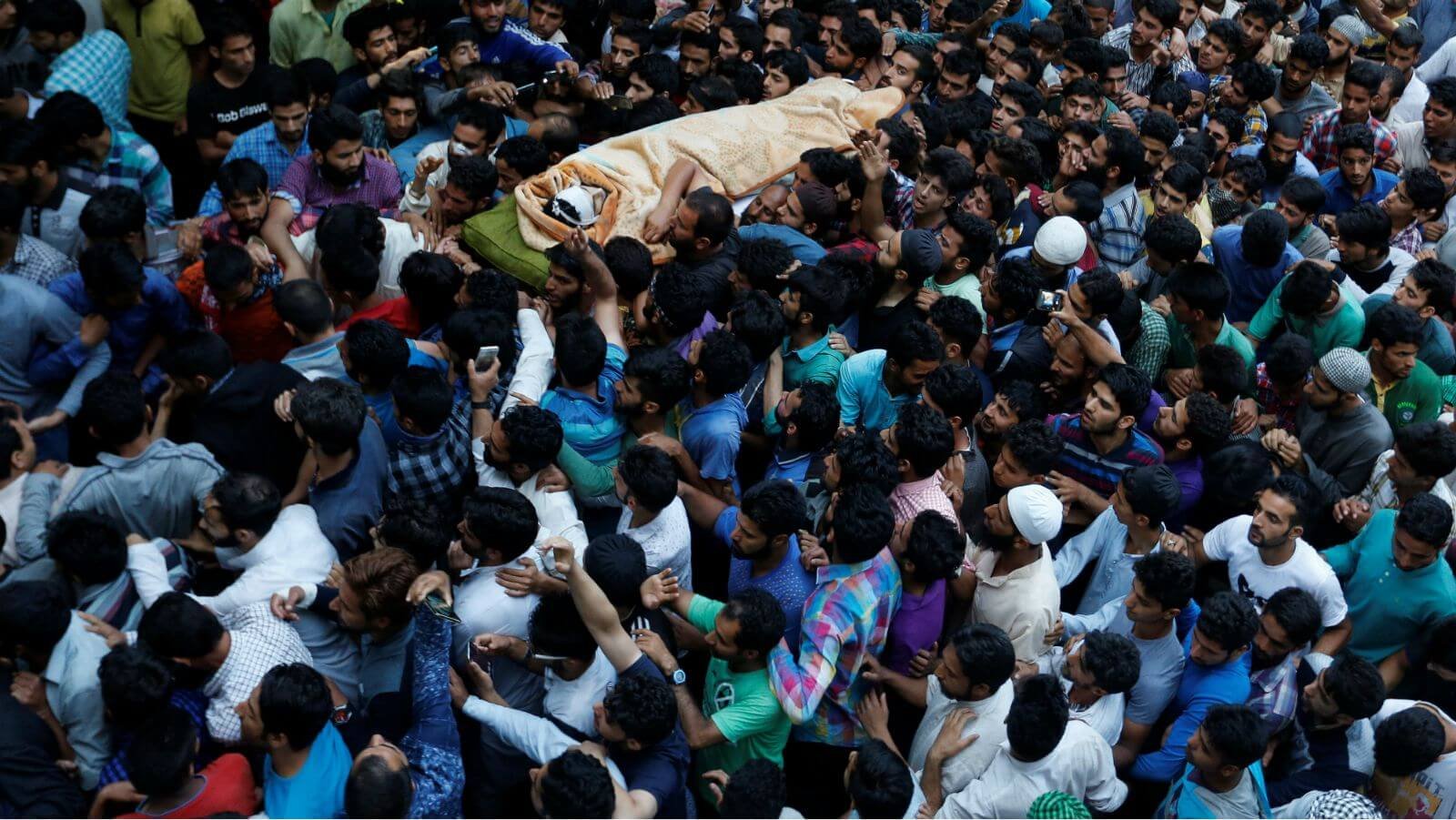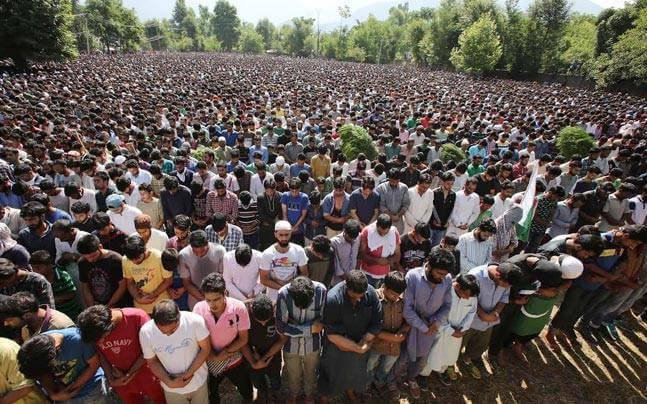Burhan Muzaffar Wani, the best known face of militancy in Kashmir was killed in South Kashmir’s Kokernag area on Friday. Thousands defied restrictions imposed by the police and thronged Wani’s home in Pulwama district’s Tral area for his funeral.
Apprehensive of large scale protests, the state government decided to impose curfew in major parts of the valley and also banned mobile internet services. Rail services were suspended and the national highway was closed. Authorities also decided to suspend the ongoing Amarnath yatra.

The killing of a militant isn’t rare in Kashmir. Neither are the subsequent protests and locals participating in the funerals in large numbers. What’s different with Wani?
Having joined the militants at the age of 15 in 2010, Burhan was among the first new-age militants who came into the public eye after the 2010 agitation against India in the state. But what made him different was his brazen presence on social media – a phenomenon never seen before. Unlike other militants, he didn’t hide his identity and didn’t remain silent.
Dozens of photos showed him in fatigues and in different poses that were a sensation on social media in the state. Videos that showed him with other militants went viral in hours, shocking the security forces in the state. He would also shoot video-messages addressing security agencies and warning them to be ready for attacks. He would appeal to the state’s police personnel to desist from participating in operations against militants.

In his hometown Tral, stories of his bravado and his ability to escape army ambushes had turned him into a legend who couldn’t be touched. He was everywhere on social media but still out of reach of the government forces. For many, the failure of more than half a million troops to track Burhan down, was seen as a victory of a young man against the Indian state.
The number of operations Burhan was involved in was far lower than other militants. But it was his psychological warfare against the security establishment that made him one of the most wanted men in the state. He inspired youth and even joined him. With social media, Burhan was able to recruit more youth for the Hizbul Mujahideen.
While he operated in south Kashmir, posters and graffiti of Burhan began to appear across the valley. His rise came at the same time as a worrying trend for security personnel as the number of protests and incidents of stone pelting during operations were also rising.
How do things change now he’s dead?
Given his image, the support at Burhan’s funeral was not surprising. While his killing on Friday has already resulted in the deaths of 8 civilians who have died during protests, the long-term impact of his death isn’t hard to guess.

Authorities are fully aware that Burhan’s killing won’t stop others from joining militant groups and might inspire more to follow in his footsteps.
Former J&K Chief Minister Omar Abdullah’s tweets on Burhan’s killing perhaps said it best:
Aftr many yrs I hear slogans for “Azadi” resonate from the mosque in my uptown Srinagar locality. Kashmir’s disaffected got a new icon y’day
— Omar Abdullah (@abdullah_omar) July 9, 2016
Mark my words – Burhan’s ability to recruit in to militancy from the grave will far outstrip anything he could have done on social media.
— Omar Abdullah (@abdullah_omar) July 9, 2016
Security personnel now fear a 2010-like summer, when over 100 unarmed youth were killed during violent protests. And what can be said with a fair bit of certainty is that Burhan’s legend won’t die out any time soon.
Feature image source: Twitter/Kashmir Life

































